In this guide, we’ll introduce you to the Eisenhower Decision Matrix and show you how to use it to prioritize your team’s time and tasks.

We’ll show you some Eisenhower Matrix examples and provide a free, customizable template you can use when implementing the approach on your team.
The Eisenhower Matrix, also known as the Eisenhower Decision Matrix, Eisenhower Box, and Urgent-Important Matrix, is a time and task management tool that helps individuals prioritize their tasks by considering two factors: urgency and importance.
It is named after Dwight D. Eisenhower, the 34th President of the U.S., who was known for his effective time management strategies.
To use the Eisenhower Matrix, first identify all the tasks you need to complete. Then, based on the urgency and importance of each one, place it in one of the four quadrants of the matrix:
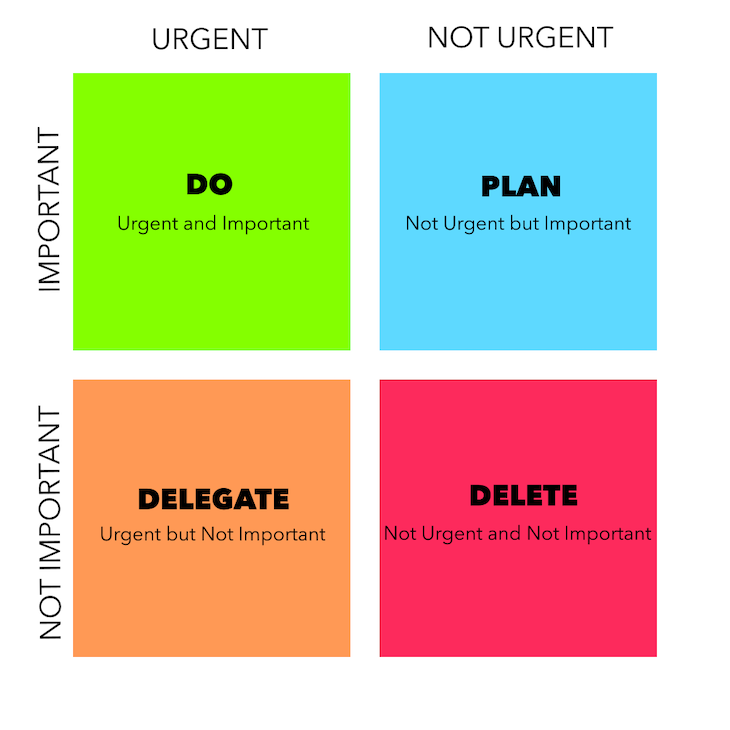
Here’s what each quadrant of the Eisenhower Matrix represents:
Anyone who needs to manage their work can use this approach. It is particularly useful for project managers because it helps them focus on the most important tasks and avoid being overwhelmed by urgent but unimportant tasks.
If you’re a product manager or a project manager, you might use the Eisenhower Matrix to do things such as:
By using the Eisenhower Matrix, you can effectively manage your time and resources and ensure that projects are completed on time and within budget.
Let’s see an example of how the Eisenhower Matrix works in practice.
In this example, the project manager has identified the following tasks:
Based on the level of urgency and importance of each task, the project manager has placed them in the appropriate quadrant of the matrix:
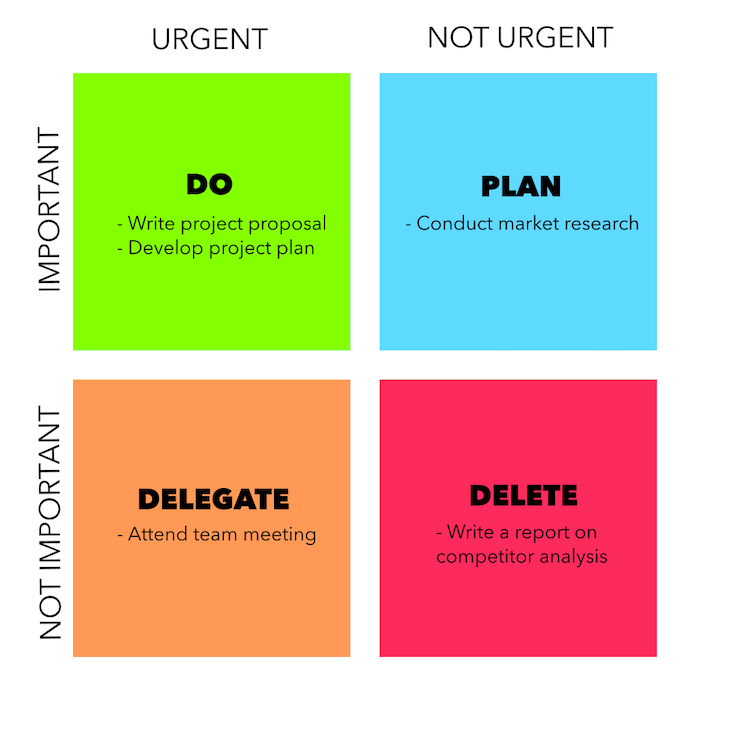
Here’s how you can read the example Eisenhower Matrix above:
If you want to give the Eisenhower Decision Matrix a try, you can use our free, customizable template to get started.
To use the Eisenhower Matrix template, click here and then select File > Make a copy from the menu above the spreadsheet.
Categorizing tasks using the Eisenhower Matrix can be a helpful way to prioritize your tasks and manage your time effectively. To realistically categorize your tasks, it is important to be honest with yourself about the level of importance and urgency of each task.
Before you begin categorizing your tasks, take some time to think about what is important to you and your goals. This will help you prioritize tasks that align with your values and objectives.
Think about the potential consequences of not completing a task. If the task is important, there will likely be negative consequences if it is not completed. On the other hand, if the task is not important, the consequences of not completing it may be minimal.
Establish deadlines for each task to help determine its level of urgency. A task with an imminent deadline is likely to be more urgent than a task with a longer timeline.
It is important to be consistent in your categorization of tasks. If you consistently categorize tasks based on their level of importance and urgency, you will be better able to prioritize your time and efforts.
From time to time, review and update your categorization of tasks, as priorities can change over time. Make sure to reassess the level of importance and urgency of your tasks regularly to ensure that you are focusing on the most important tasks.
If you plan to use the Eisenhower Matrix, you first need to explain the concept of the Eisenhower Matrix to your team and how it can be used to prioritize work and manage time efficiently.
Have each team member identify all the tasks they need to complete, including both work-related and personal tasks.
Then, have team members categorize their tasks using the matrix, placing each task in the appropriate quadrant based on its level of importance and urgency.
Encourage team members to focus on tasks in quadrant 1 first because they are both urgent and important. They should also give attention to tasks in quadrant 2, which are important but not urgent. Tasks in quadrant 3 can be delegated or postponed, while tasks in quadrant 4 should be eliminated if possible.
Encourage team members to regularly review and update their task priorities. This will help them stay on track and ensure that they are focusing on the most important tasks.
Like any other framework or tool, the Eisenhower Matrix is not a one-size-fits-all solution and has some limitations.
For one, categorization of tasks into the quadrants of the matrix can be subjective because the level of importance and urgency of tasks can vary depending on the individual and the context. This can make it difficult to determine the appropriate categorization of certain tasks.
Furthermore, the Eisenhower Matrix does not consider external factors such as the workload or the availability of resources. It also does not account for unexpected events or priorities that may change during the day.
There are many different frameworks and tools that can be used to prioritize tasks and manage time effectively. Here is how the Eisenhower Matrix compares with other popular prioritization frameworks:
The Priority Matrix is a tool that helps individuals prioritize tasks based on their potential impact and the resources required to complete them. It consists of a matrix with four quadrants, similar to the Eisenhower Matrix. However, the criteria used to categorize tasks are different.
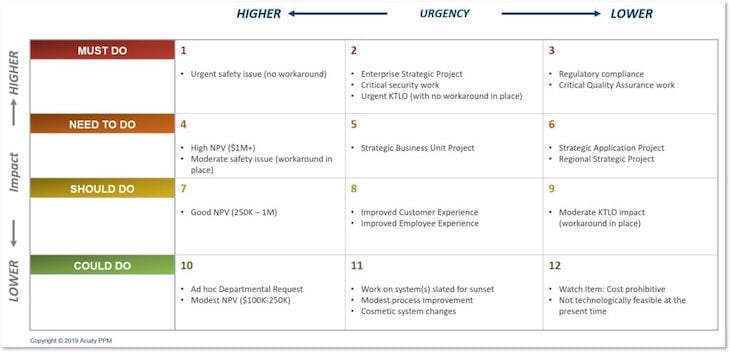
The Time Management Matrix, also known as the Covey Matrix, is a tool developed by Stephen Covey to help individuals prioritize tasks based on their level of importance and urgency. It consists of four quadrants similar to the Eisenhower Matrix, but the criteria used to categorize tasks are slightly different.
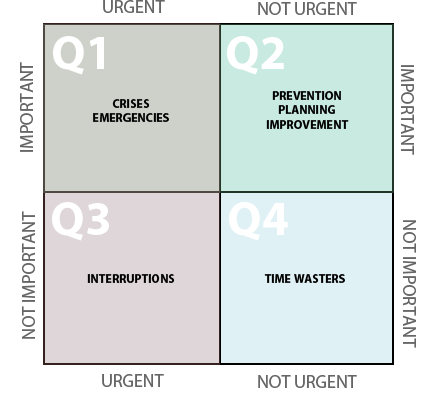
The Pareto Principle, also known as the 80/20 rule, states that 80 percent of the effects come from 20 percent of the causes.
This principle can be used to prioritize tasks by focusing on the 20 percent of tasks that are most important and will have the greatest impact.
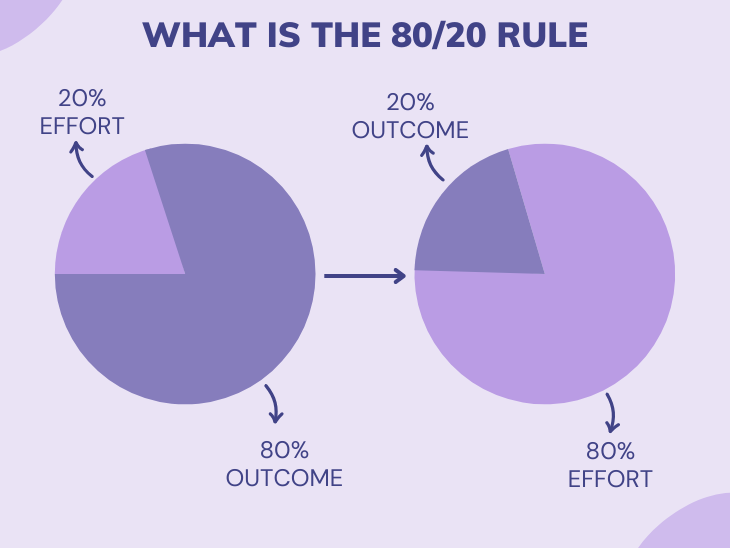
Kanban is a project management method that uses a visual board to track the progress of tasks through various stages of completion. It is a flexible tool that can be used to prioritize tasks by moving them to the top of the board or assigning them to specific team members.

The Eisenhower Matrix can be a valuable tool for managing time and priorities efficiently and achieving your goals, whether you are an individual or part of a team.
By understanding the framework and how to implement it, you can take control of your time and be more productive.

LogRocket identifies friction points in the user experience so you can make informed decisions about product and design changes that must happen to hit your goals.
With LogRocket, you can understand the scope of the issues affecting your product and prioritize the changes that need to be made. LogRocket simplifies workflows by allowing Engineering, Product, UX, and Design teams to work from the same data as you, eliminating any confusion about what needs to be done.
Get your teams on the same page — try LogRocket today.

A practical framework for PMs to use AI in ideation without sacrificing judgment, strategy, or decision quality.

A practical five minute revenue estimation method to help product managers compare ideas, drop low impact features, and prioritize smarter.

A practical guide for PMs who want to stop being bottlenecks, delegate smarter, and lead teams effectively with a clear ownership framework.

Stop letting unreliable data block features. Treat data as inventory to track quality, ownership, and ship with confidence.